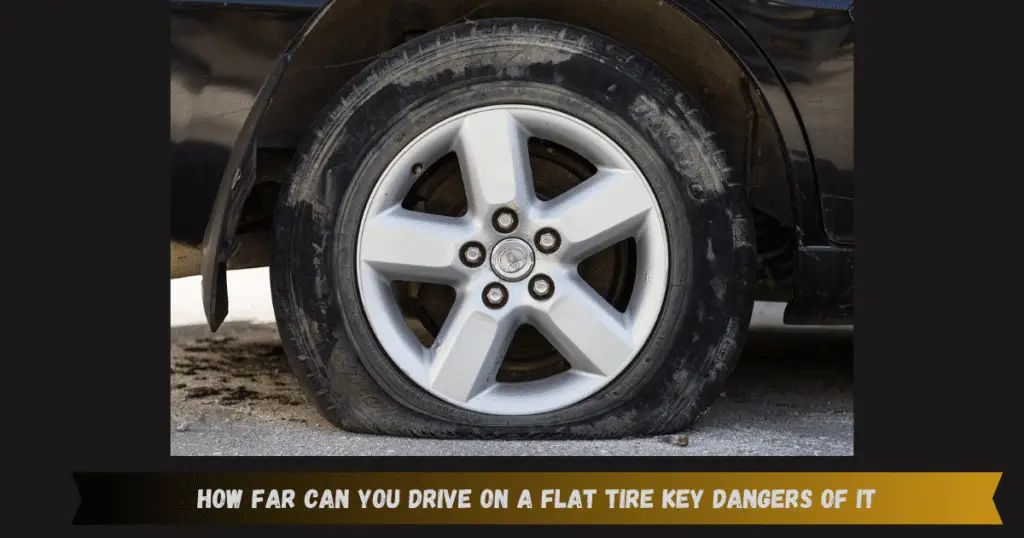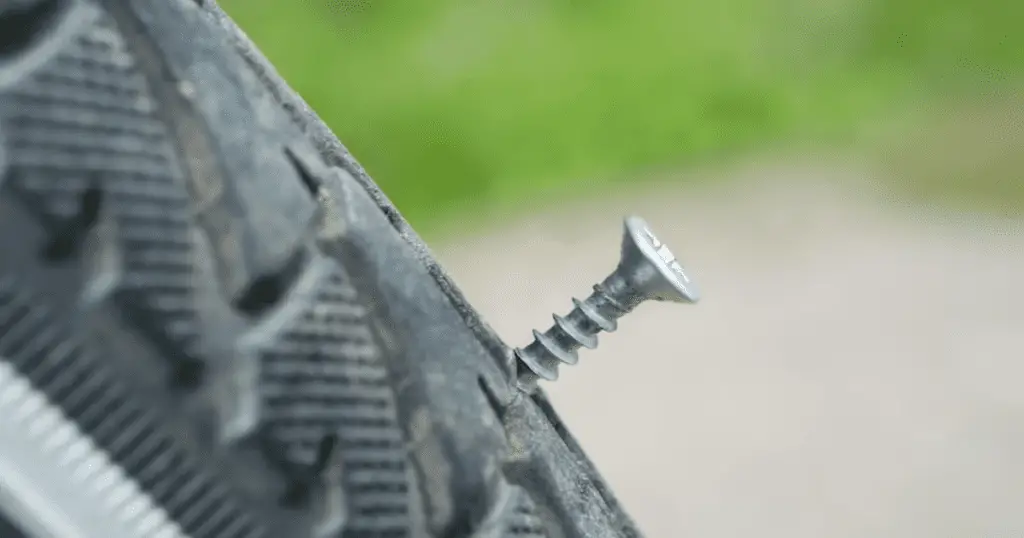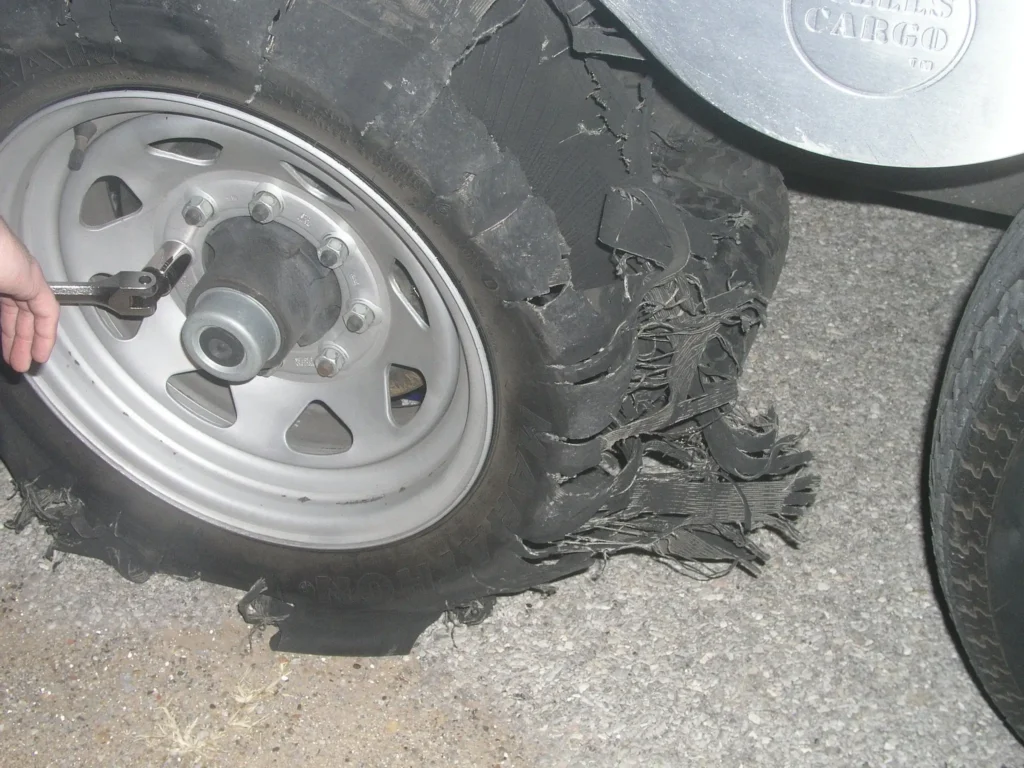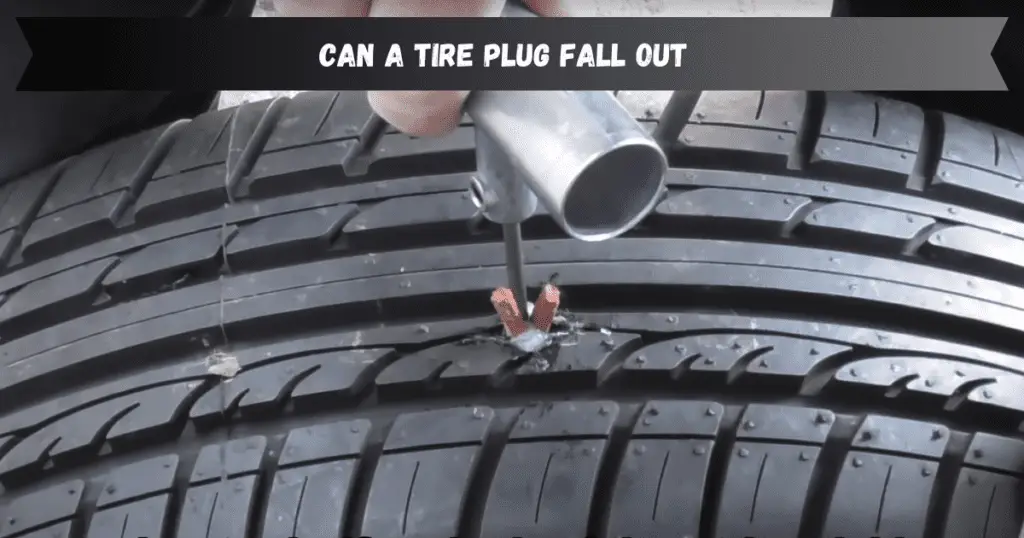Finding yourself with a sudden flat tire on the road often leads to the tempting question – can I just drive on it a little further to get home or to a shop? It may seem harmless, but driving any distance on a fully flat tire risks extensive damage and safety hazards.
While you may be able to limp a very short distance to a safe spot, driving more than a couple of miles on a flat is never advisable. Let’s examine why you should avoid extended driving on a flat, what the maximum distance truly is, and your best options when a flat strikes.
How Far Can You Drive On A Flat Tire Key Dangers of It

It may be possible to drive some distance on a fully deflated tire by taking it slow, but there are critical risks to be aware of:
- Irreparable tire damage – Driving on a flat tread quickly degrades the tire materials through overheating and sidewall flexing. This can lead to complete failure.
- Wheel rim damage – With no cushioning from the flattened tire, the rim bears the full brunt of impacts, which can bend, crack, or warp it.
- Loss of control – Flats tremendously reduce braking grip, steering responsiveness, and stability, especially at highway speeds.
- Additional vehicle damage – Stressed suspension components and excessive vibration throughout the chassis risk further damage.
- Safety hazards – Increased stopping distance and handling instability endanger you and other motorists when driving on a flat.
While you may be tempted to push it and drive for help, the repercussions simply aren’t worth the risk just to avoid changing a tire or calling a tow.
The Maximum Distance You Should Drive
If completely flat, you should limit driving on it to no more than 1-2 miles max, taking it very slow. However, the specific maximum depends on several factors:
- Tire type – Performance tires have less sidewall structure versus all-season or winter tires, limiting flat driving distance.
- Tire condition – Brand new tires can handle a short flat drive better than older, worn tires at risk of disintegrating.
- Vehicle weight – Heavier vehicles put more stress on flattened tires, shortening safe flat-driving limits.
- Road conditions – Harsh surfaces with potholes and debris are more punishing on flat tires than smooth roads.
- Driving speed – The faster you drive, the quicker flat tires deteriorate from friction and wheel bouncing.
- Distance to stop – If already very close to your destination, you may drive a mile or less at 5-10 mph. Otherwise, stop ASAP.
The bottom line is that you want to keep a flat driving distance to an absolute minimum by pulling over immediately in a safe area.
Hazards Specific to the Tire
Driving any length on a fully flat tire presents immediate threats to the tire itself:
- The flattened tread area scrubs against the pavement, causing rapid heat buildup that degrades the rubber.
- Sidewall cords flex excessively without air pressure, generating internal heat and friction that tears materials.
- Uncontrolled bouncing and imprinting from the flattened tread section ruins internal components.
- Portions of the tread can rip away, with rubber debris potentially damaging the vehicle.
- Bead seals separating from the rim frequently lead to irreparable sidewall damage.
Just a mile or two risks severe structural harm and the need for a full replacement.
Hazards Specific to the Rim
The wheel rim also faces significant risks when driving on a deflated tire:
- The lack of cushioning from the tire transfers harsh road impacts directly to the rim.
- Hits from potholes and objects bend, dent, crack, and warp the rim without the tire’s shock absorption.
- Friction and rubbing from a flat tire wear away the rim’s finish and protective coatings.
- Extreme stress on a flattened tire can cause sudden loss of bead seal, damaging rim flanges.
- Even minor rim damage requires expensive repairs like straightening or full replacement.
Rims are designed to stay rigid under pressure, not endure impacts through flattened tires. Just one pothole strike on a flat can crack lightweight alloy rims.
Alternatives for Getting Help With a Flat
Rather than tempting fate by driving any real distance on a flat, use these recommended alternatives for getting help:
- Call a towing service to transport both you and the vehicle to a tire shop – this is the ideal option to avoid damage.
- If safe, change out the flat with your spare or a properly inflated do-not-drive flat tire, then drive on it the minimum distance to a tire service location.
- Use an emergency tire inflator/sealant to temporarily re-inflate the tire, and drive slowly to a shop close by.
- If nearby, crawl no more than a mile or two on the flat at 5-10 mph max to reach help, continually checking for damage.
In most cases, unless already at your destination, towing or an emergency inflator will be the smartest option for avoiding damage from driving flats.
Frequently Asked Questions
Can I drive 10 minutes on a flat tire?
It’s never recommended to purposely drive any substantial amount of time or distance on a fully flat tire. Limit it to 1-2 miles max, and only if going very slowly and no other help is available.
Can you drive a short distance with a flat tire?
You can technically drive a very short distance on a flat at low speeds, but it risks immediate damage. It’s best to call for assistance unless you’re already at your destination or can safely change to the spare tire.
Will driving on a flat tire ruin the rim?
Yes, driving on a completely flat tire risks bending, cracking, or warping the wheel rim without the tire’s shock-absorbing qualities. Even short drives on a flat can damage the rim.
Is it safe to travel on a flat tire?
Driving any extended distance on a fully deflated tire is unsafe due to reduced stability, braking, and handling performance. Always change to the spare or call for help when encountering a flat.
Can I put air in a flat tire?
Only if the flat is from a slow leak and hasn’t damaged the tire’s structure. Fully flattened, stressed tires from driving on them while flat can be too compromised to safely re-inflate and use.
What happens if you drive fast on a flat?
Higher speeds on a flat rapidly accelerate damage to the tire and rim. Fast highway speeds greatly increase the risk of a catastrophic tire failure and loss of vehicle control.
What PSI is a flat tire?
Any tire at 50% or lower than the recommended pressure should be considered dangerously underinflated. When flat (0 PSI), extensive damage can occur from driving.
What are the risks of flat tires?
Driving on flats risks damage to tires, rims, suspension, loss of control, getting stranded, and collisions. Flats should be addressed ASAP by changing the tire or calling for assistance.
Conclusion
While it may seem convenient at the moment, driving any substantial distance on a flat tire risks expensive mechanical damage and dangerous driving conditions. Exercise caution and limit flat driving distance to an absolute minimum when facing deflated tires. Your best response is to call for help, change to a spare, or re-inflate with an emergency kit whenever safely possible. Don’t jeopardize your safety just to avoid waiting for assistance. How Far Can You Drive On A Flat Tire? With prudence and prompt action, a flat doesn’t have to ruin your day or car.





